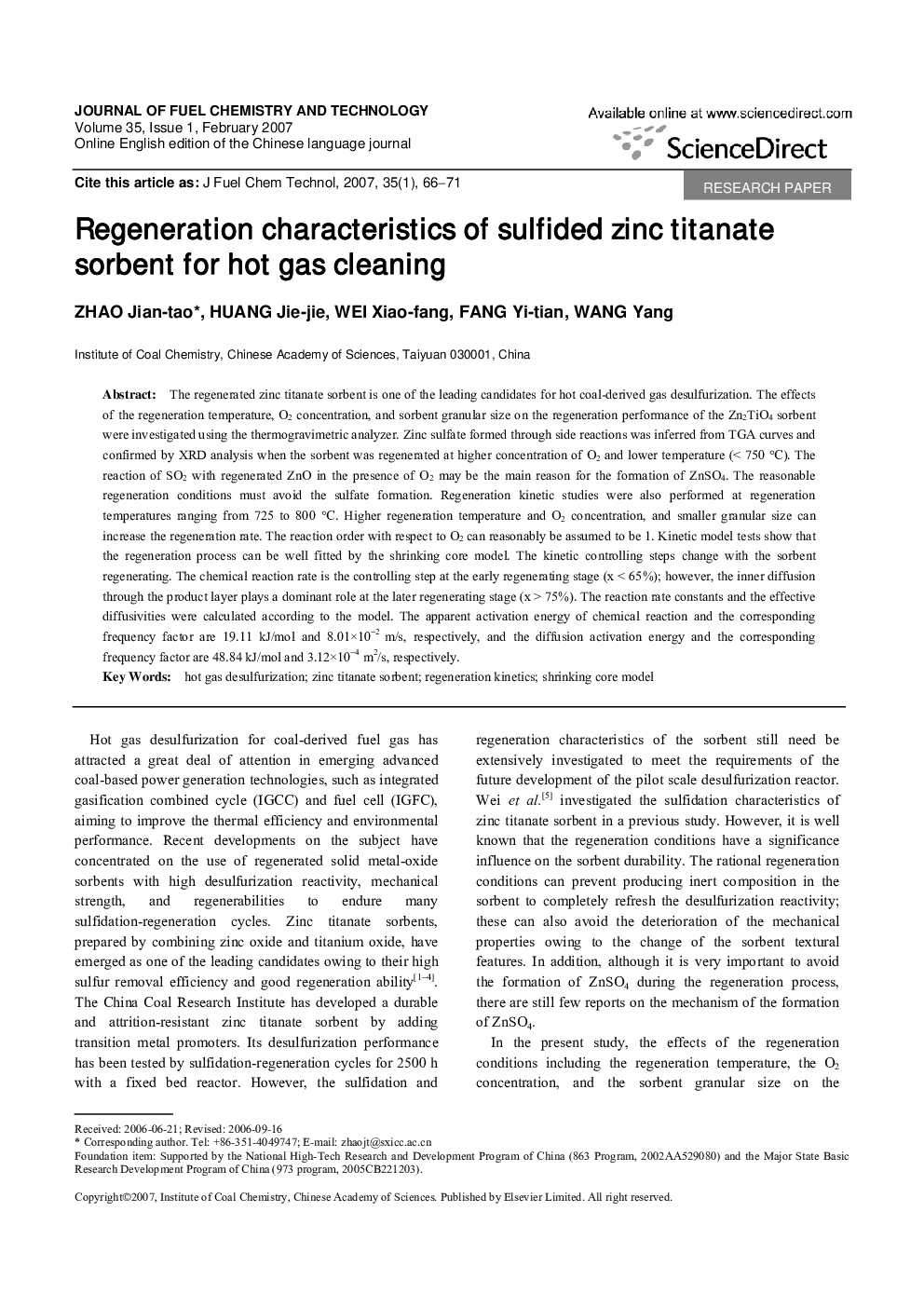| کد مقاله | کد نشریه | سال انتشار | مقاله انگلیسی | نسخه تمام متن |
|---|---|---|---|---|
| 64517 | 48360 | 2007 | 7 صفحه PDF | دانلود رایگان |

The regenerated zinc titanate sorbent is one of the leading candidates for hot coal-derived gas desulfurization. The effects of the regeneration temperature, O2 concentration, and sorbent granular size on the regeneration performance of the Zn2TiO4 sorbent were investigated using the thermogravimetric analyzer. Zinc sulfate formed through side reactions was inferred from TGA curves and confirmed by XRD analysis when the sorbent was regenerated at higher concentration of O2 and lower temperature (< 750°C). The reaction of SO2 with regenerated ZnO in the presence of O2 may be the main reason for the formation of ZnSO4. The reasonable regeneration conditions must avoid the sulfate formation. Regeneration kinetic studies were also performed at regeneration temperatures ranging from 725 to 800°C. Higher regeneration temperature and O2 concentration, and smaller granular size can increase the regeneration rate. The reaction order with respect to O2 can reasonably be assumed to be 1. Kinetic model tests show that the regeneration process can be well fitted by the shrinking core model. The kinetic controlling steps change with the sorbent regenerating. The chemical reaction rate is the controlling step at the early regenerating stage (x < 65%); however, the inner diffusion through the product layer plays a dominant role at the later regenerating stage (x>75%). The reaction rate constants and the effective diffusivities were calculated according to the model. The apparent activation energy of chemical reaction and the corresponding frequency factor are 19.11 kJ/mol and 8.01×10−2 m/s, respectively, and the diffusion activation energy and the corresponding frequency factor are 48.84 kJ/mol and 3.12×10−4 m2/s, respectively.
Journal: Journal of Fuel Chemistry and Technology - Volume 35, Issue 1, February 2007, Pages 65-71